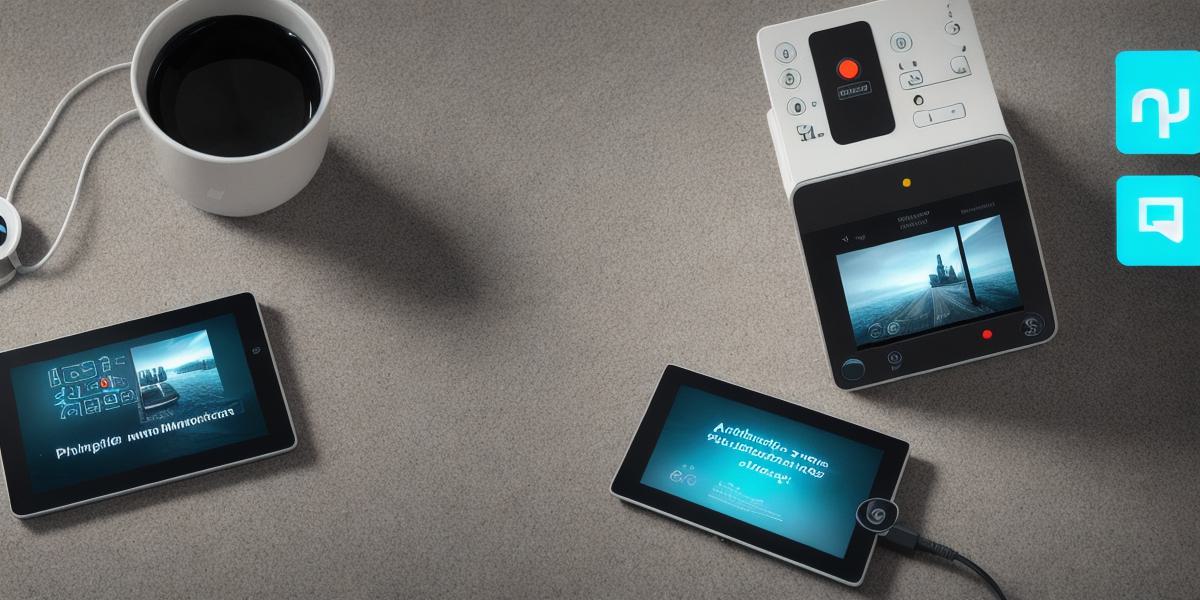AAC Only for Nonverbal? No Way! The Rise of Augmentative and Alternative Communication (AAC)

Introduction:
The rise of Artificial Intelligence (AI) has revolutionized the way we interact with technology, but it’s not just about voice assistants and chatbots. One of the most exciting and transformative applications of AI is in the field of Augmentative and Alternative Communication (AAC), which provides a means for individuals with communication difficulties to express themselves using digital devices. In this article, we will explore the world of AAC and dispel the myth that it’s only for nonverbal individuals.
What is AAC?
At its core, AAC involves the use of technology to support communication for people who have difficulty speaking or communicating in other ways. This can range from simple speech-to-text apps to sophisticated systems that enable complex language and gestures through the use of sensors, cameras, and other hardware. AAC technologies are designed to augment, rather than replace, natural communication abilities, allowing individuals with disabilities to participate more fully in society.
AAC for Nonverbal Individuals:
It’s true that many people who use AAC devices are nonverbal, but this doesn’t mean that AAC is only for nonverbal individuals. In fact, research has shown that a significant proportion of individuals with communication difficulties use AAC as a supplement to their natural language abilities, rather than relying solely on assistive technology.
One example of this is the story of John, a young man with Down syndrome who uses an iPad equipped with AAC software to communicate complex thoughts and ideas. Although he is not nonverbal, John has difficulty expressing himself verbally due to a speech disorder. By using the iPad, he is able to communicate more effectively and engage in activities that would be impossible without AAC.
Another example is the use of AAC by individuals with Autism Spectrum Disorder (ASD). Many people with ASD have difficulties with social communication and may struggle to express themselves verbally or through nonverbal cues. By using AAC devices, they are able to communicate more effectively and participate more fully in social activities.
The Power of AAC:
AAC technology is not just about augmenting communication; it’s also about empowering individuals with disabilities to take control of their lives and participate more fully in society. By providing a means for individuals to express themselves directly, AAC can help break down barriers and promote greater inclusion and acceptance.
Research has shown that the use of AAC technology can lead to significant improvements in language development, social communication skills, and overall quality of life for individuals with disabilities. In fact, one study found that the use of AAC technology led to a 30% increase in the number of words spoken by children with Down syndrome over a six-month period.
Conclusion:
In conclusion, the idea that AAC is only for nonverbal individuals is simply not true. AAC technology has the power to augment and enhance communication abilities for individuals with a wide range of disabilities, and can lead to significant improvements in language development, social communication skills, and overall quality of life. So let’s embrace AAC as a tool for empowering individuals with disabilities to participate more fully in society, regardless of their ability to communicate naturally.
FAQs:
- Can anyone use AAC technology?
AAC technology can be used by anyone who has difficulty communicating, including individuals with speech disorders, autism spectrum disorder, Down syndrome, and other communication difficulties. - Is AAC technology only for nonverbal individuals?
No, AAC technology is not just for nonverbal individuals. Many people use AAC as a supplement to their natural language abilities, rather than relying solely on assistive technology. - What types of devices can be used for AAC?
AAC devices can range from simple speech-to-text apps to sophisticated systems that enable complex language and gestures through the use of sensors, cameras, and other hardware.








